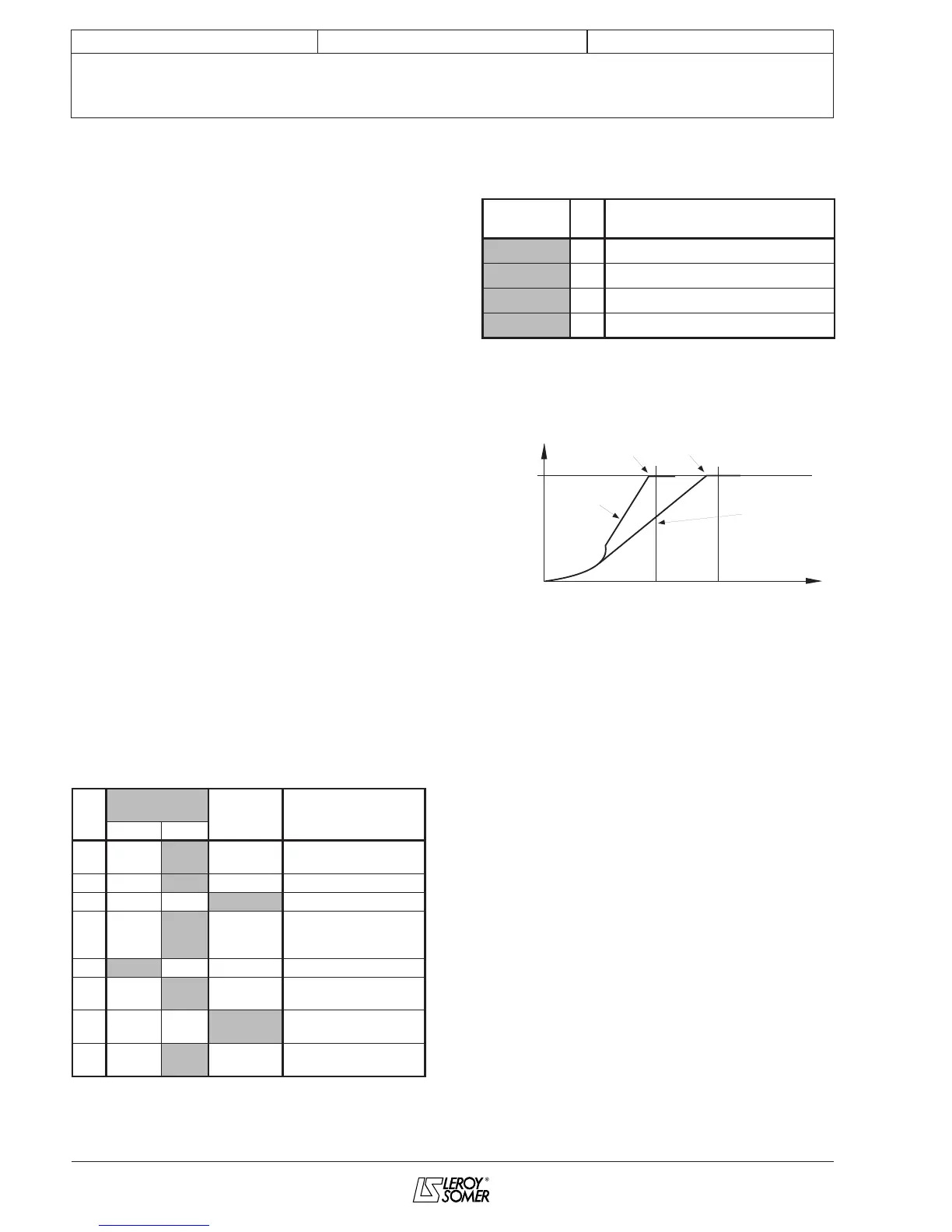6
LEROY-SOMER
2010.11 / f
Installation and maintenance
R438
A.V.R.
2 - R438 A.V.R.
2.1 - Characteristics
- Storage : -55°C ; +85°C
- Operation : -40°C ; +70°C
- Standard power supply: AREP or PMG.
- Rated overload current: 8 A - 10 s
- Electronic protection (overload, short-cir-
cuit on opening of voltage sensing circuit):
excitation overload current for 10 seconds
then return to approximately 1A. The alter-
nator must be stopped (or the power
switched off) in order to reset the protection.
- Fuse : F1 on X1, X2. 8A ; slow - 250V
- Voltage sensing : 5 VA isolated via trans-
former ;
• 0-110 V terminals = 95 to 140 V,
• 0-220 V terminals = 170 to 260 V,
• 0-380 V terminals = 340 to 520 V.
- Voltage regulation ± 1%.
- Normal or rapid response time via ST2
jumper (see below).
- Voltage adjustment via potentiometer P2.
other voltages via adapter transformer
- Current sensing (parallel operation): C.T.
2.5 VA cl1, secondary 1 A (optional).
- Quadrature droop adjustment via potentio-
meter P1.
- Max. excitation current adjustment via P5
(see below).
2.1.1 -
Conguration jumpers function
Pot.
Delivrery
cong.
Position Function
Open Closed
ST1 3-ph. Mono
Open for module
installation tri detection
ST2 Fast Normal Response time
ST3 50 ou 60 Hz Frequency selection
ST4
External
potentio-
meter
Without Potentiometer
ST5 Without With LAM
ST9
Others
(PMG...)
AREP Supply
ST10 13% or 25%
LAM voltage drop
amplitude
ST11 65 Hz
48 or
58 Hz
U/f function bend
position
2.1.2 - Setting potentiometers
function
Delivrery
position
Pot. Function
0 P1 Quadrature droop ; // operation with C.T.
400V P2 Voltage
Centre P3 Stability
Maxi P5 Excitation current ceiling
2.2 - Frequency compared with
voltage (without LAM)
2.3 - LAM (Load Acceptance
Module) characteristics
2.3.1 - Voltage drop
The LAM system is integrated in the R 438
AVR as standard.
Role of the «LAM» (Load Adjustment Mo-
dule) :
On application of a load, the rotation speed
of the generator set decreases. When it
passes below the preset frequency thres-
hold, the LAM causes the voltage to drop by
approximately 13% or 25% and conse-
quently the amount of active load applied is
reduced by approximately 25% to 50%, until
the speed reaches its rated value again.
Hence the LAM can be used either to reduce
the speed variation (frequency) and its dura-
tion for a given applied load, or to increase
the applied load possible for one speed va-
riation (turbo-charged engine).
To avoid voltage oscillations, the trip thres-
hold for the LAM function should be set ap-
proximately 2 Hz below the lowest frequen-
cy in steady state.

